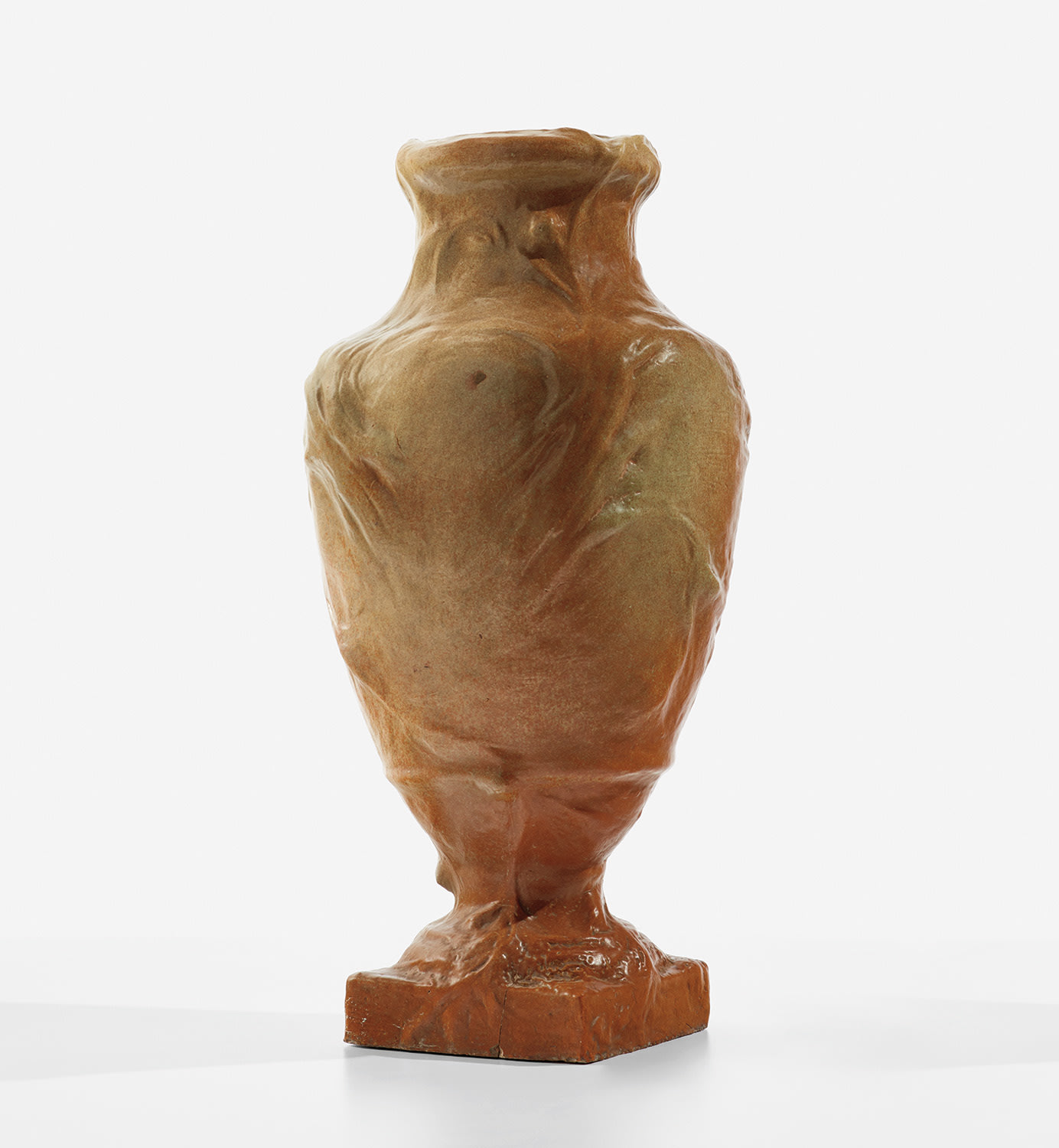

Arts du Feu: Works from the Collection of Jason Jacques
29
Georges Hoentschel
Monumental vase
circa 1900
Glazed stoneware.
31 x 14 x 14 in. (78.7 x 35.6 x 35.6 cm)
Underside impressed with artist's GH cipher.
Full-Cataloguing
A Parisian architect, interior decorator, business owner and collector, Georges Hoentschel influenced international taste for over thirty years. He was introduced to the arts in 1860 when, upon his father’s death, his family moved to live with their relative Ernest Leys. Leys owned a well-known upholstery and woodworking firm on the Place de la Madeleine in Paris, and young Hoentschel received an early education in the arts and in managing a crafts-based enterprise. Hoentschel purchased the business upon Ley’s death in 1882 and employed fifty of the finest craftsmen in Europe, including Armand-Albert Rateau, to meet the growing demand for luxury objects to fill the homes of his wealthy clients. Much like Louis Tiffany in the United States, Hoentschel did not actually produce the items himself but instead influenced and inspired his employees. He became a fixture in Parisian society and befriended several celebrities of the period, including Marcel Proust, Robert de Montesquiou, James Whistler and Giovanni Boldini. Hoentschel’s clientele was equally impressive and included J.P. Morgan, Jacques Doucet and the Emperor of Japan. Perhaps the highlights of his career were the designing of the Pavillon de l’Union des Arts Décoratifs for the 1900 Paris Exposition Universelle and the interior design and furniture for much of the International Exhibition at the 1904 St. Louis World’s Fair.
Hoentschel was introduced to ceramic production when he became friends with Jean Carriès, a friendship that continued until the latter’s death in 1894. Carriès visited the Japanese section at the 1878 Exposition Universelle with his colleague and friend, Eugène Grasset, and marveled at the beauty of the stoneware on exhibition. This love of Japonisme and ceramics was soon shared with Hoentschel and he hired Carriès, and later Émile Grittel, to produce Japanese-inspired works in the Art Nouveau style for his more serious clients. The monumental stoneware vases offered here are superior examples. The gently balustered bodies, each raised on a square foot, are subtly decorated in relief with aquatic vegetation that reflects Hoentschel’s interest in Japonisme as well as the exceptional quality of his work. Hoentschel’s stoneware vessels are rarely available and objects of this size are rarer still. Examples of his ceramics are in the permanent collections of the Musée des Art Décoratifs, the Petit Palais, The Metropolitan Museum of Art and the Frick Collection. The works on offer present a singular opportunity to acquire significant works from an Art Nouveau master.
Hoentschel was introduced to ceramic production when he became friends with Jean Carriès, a friendship that continued until the latter’s death in 1894. Carriès visited the Japanese section at the 1878 Exposition Universelle with his colleague and friend, Eugène Grasset, and marveled at the beauty of the stoneware on exhibition. This love of Japonisme and ceramics was soon shared with Hoentschel and he hired Carriès, and later Émile Grittel, to produce Japanese-inspired works in the Art Nouveau style for his more serious clients. The monumental stoneware vases offered here are superior examples. The gently balustered bodies, each raised on a square foot, are subtly decorated in relief with aquatic vegetation that reflects Hoentschel’s interest in Japonisme as well as the exceptional quality of his work. Hoentschel’s stoneware vessels are rarely available and objects of this size are rarer still. Examples of his ceramics are in the permanent collections of the Musée des Art Décoratifs, the Petit Palais, The Metropolitan Museum of Art and the Frick Collection. The works on offer present a singular opportunity to acquire significant works from an Art Nouveau master.